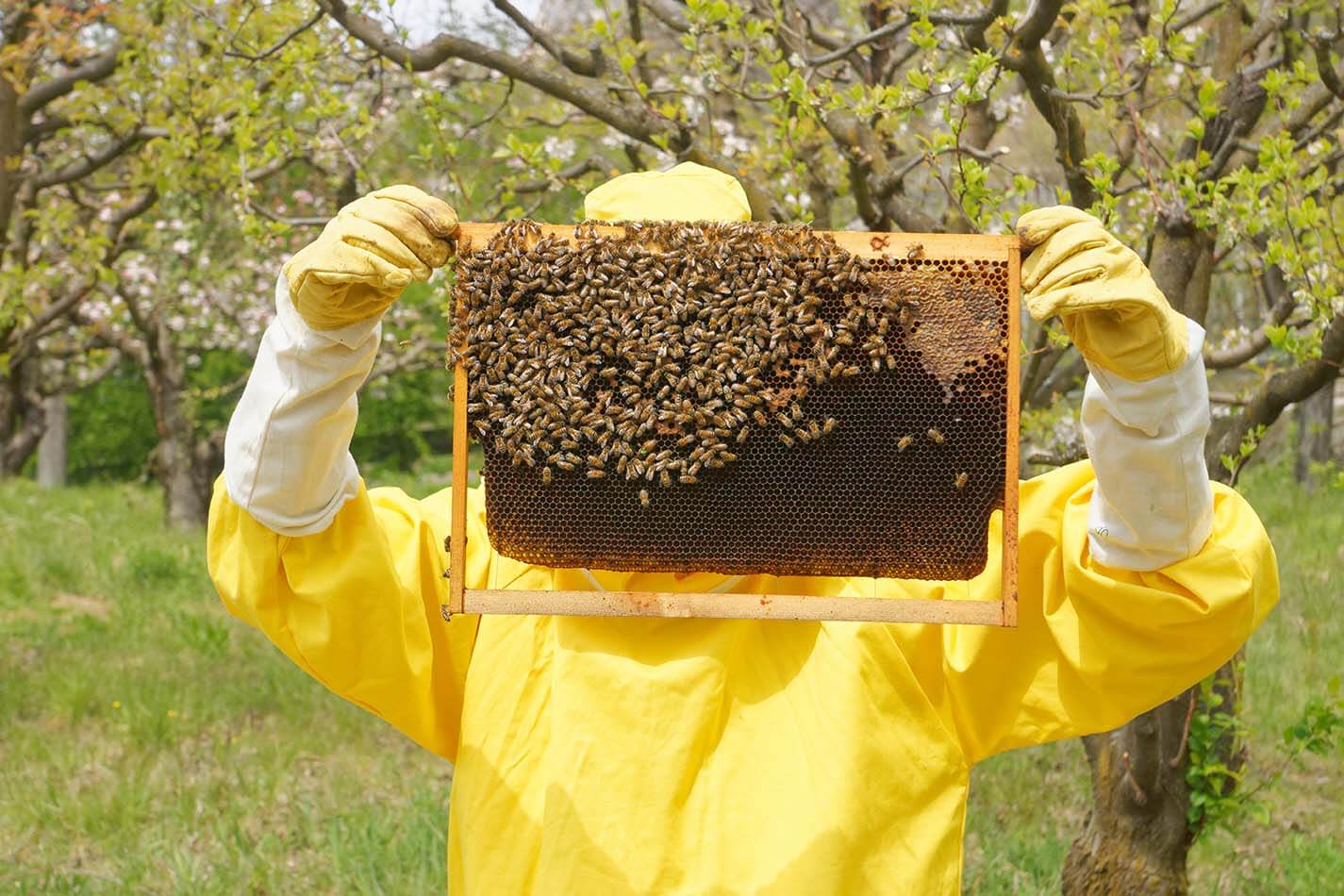
Imagine a photo of a beekeeper scanning a frame of brood. The beekeeper wears a multi-layered suit of armor and clutches the frame with thick gloves and a veiled expression. This posture, perhaps the most common image in beekeeping, makes me wonder if beekeepers do anything else. I’m especially perplexed by the TV commercial for a financial services company that shows two female beekeepers in spotless lemon-colored bee suits and chalk-white gloves gawking at picture-perfect frames. Their bees don’t sting or chase or poop; they don’t even fly off the combs. Perhaps beekeeping would be easier if I switched investment firms.
The care and feeding of baby animals
Although we beekeepers spend hours peering at frames and evaluating brood patterns, it’s easy to forget their purpose. After all, what is a brood nest if not a CAFO for bees? Take a moment to imagine a traditional CAFO (concentrated animal feeding operation) brimming with genetically similar youngsters. The animals populate open feedlots or windowless buildings, may occupy individual stalls or cages, and eat from bins or conveyor belts. They munch in cacophonous crowds while their waste sluices away in steamy, stinky streams destined for lagoons and digesters.
Today, dairy cows, hogs, sheep, turkeys, and chickens — both layers and broilers — often live in these “factory farms.” Despite an ever-expanding web of regulation designed to improve conditions, these are not nice places.
Understandably, many people loathe CAFOs for ethical reasons, some refusing to eat products that arise within. I empathize with those folks and agree we should treat all animals with humility and respect, especially those we eat.
The brood comb solution
Ironically, honey bees evolved an energy-efficient feeding system that superficially mirrors a CAFO. A brood frame contains compact rows of cells confining individuals of a certain age. The inmates — one to a cell — eat nonstop while waste accumulates in their intestines. Without input from industrial engineers, architects, materials consultants, and time-and-motion specialists, honey bees devised an efficient, healthful, and pleasant-smelling solution far superior to any man-made CAFO.
The brood comb solution to group nurturing is a spectacular example of energy conservation that differentiates honey bees from the more common solitary bees. In insects, most group rearing occurs in social species such as honey bees, stingless bees, hornets, yellowjackets, and ants. Other bee species, such as bumble bees and some sweat bees, use a variation of group feeding on a much smaller scale.
Although group feeding of the type we see in honey bees seems like the antithesis of beneficent child rearing, in many ways it’s more humane than the feeding regimens of most insects. A major advantage of group feeding lies in the amount of attention the infant (or larval stage) receives from its caregiver. Social larvae receive continual attention while solitary larvae receive none. Just like the movie, solitary bee larvae are “Home Alone” with no supervision nor help …


